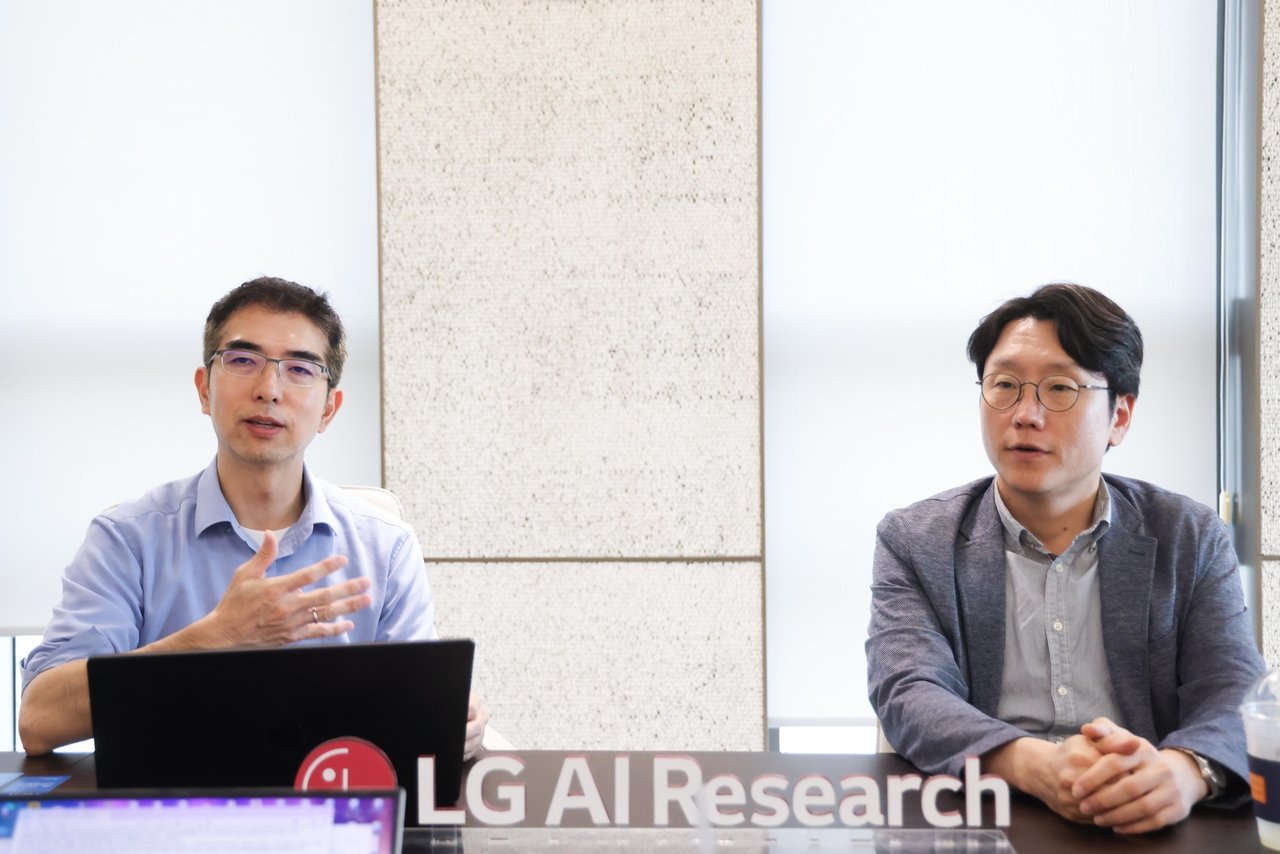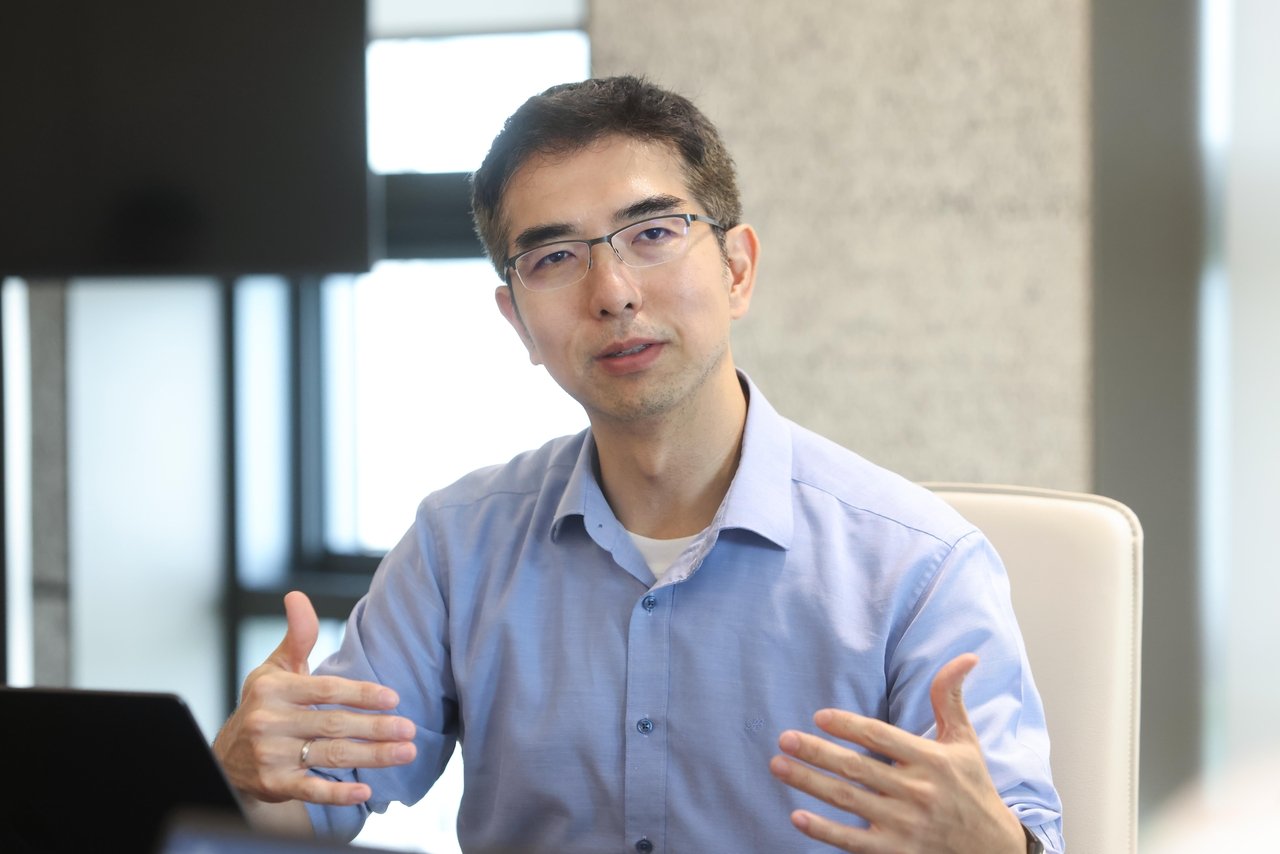AI Research
Beyond ambition: LG charts Korea’s path to AI sovereignty

LG bets on optimized training, industry-tailored applications to give Korea competitive AI edge
As artificial intelligence rewrites the rules of global competition, South Korea faces a moment of truth. At the center of this race is LG AI Research, led by two of the country’s top AI strategists, determined to secure Korea’s place among the world’s technological powers.
“It’s not just a lofty ambition,” says Lim Woo-hyung, co-head of LG AI Research, in a recent interview with The Korea Herald. “It’s a national mandate.”
Seated next to him, co-head Lee Hong-lak adds, “This isn’t a game where second place is good enough. Korea must achieve technical sovereignty to survive and then scale to compete.”
What they’re describing is more than a corporate agenda. It is, in essence, a geopolitical strategy — one defined by semiconductors, algorithms and the global flow of data.
Sovereign AI: Not just buzzword
Terms such as “sovereign AI,” “Korean-style AI” and “vertical AI” have become frequent fixtures at conferences and in policy documents. But few articulate their real-world implications as clearly as Lim and Lee.
“Sovereign AI doesn’t mean isolationism,” Lim emphasizes. “It means having the freedom to control, modify and evolve our AI systems without foreign dependence.”
In other words, sovereignty in AI equates to technological self-determination — a concept that gains critical importance as AI increasingly permeates areas such as national defense, education, culture and health care.
“The risk isn’t limited to licensing or vendor lock-in,” Lee adds. “It’s about data dependence. When key operations rely on external (application programming interfaces), like ChatGPT, the very data that powers AI, arguably the most valuable national asset of the 21st century, could flow overseas.”
Exaone: Korea’s answer to global LLMs
At the core of LG’s strategy is Exaone, the company’s flagship large language model. Since its launch in 2021, Exaone has undergone rapid development, now standing at version 4.0. While its size and performance match global peers, LG’s unique approach to model training and deployment distinguishes it.

“We knew early on that we couldn’t match the GPU scale of hyperscalers in the US or China,” Lim explains. “So we optimized for efficiency. We invested heavily in data quality, synthetic data generation and cost-effective training methods.”
Exaone is now embedded across various LG Group affiliates, supporting document Q&A systems, intelligent customer service centers and industry-specific use cases.
“This isn’t AI for AI’s sake,” says Lee. “This is vertical AI, solutions tailored to Korea’s industrial backbone: manufacturing, electronics and telecom.”
One of Korea’s enduring challenges in AI is linguistic. The imbalance between English and Korean training data remains stark, limiting Korean language model performance.
But rather than seeing this as a handicap, LG sees opportunity.
“Training Korean in conjunction with multiple languages actually improves Korean-language performance,” Lee notes. “It’s not about creating Korean-only AI. It’s about building a globally competitive AI that also excels in Korean contexts.”
To that end, Exaone 4.0 supports Korean, English and Spanish, with the latter added to align with LG’s growing footprint in North and Latin America.
From underdog to contender
Can Korea realistically join the US and China as an AI superpower?

“We must. And we can,” Lee says without hesitation. “If you look just beyond the top two, that’s where Korea can lead.”
Lim is more direct. “This isn’t about ambition. It’s about survival.”
Still, the duo is acutely aware of Korea’s limitations. “Chinese firms such as Alibaba operate with tens of thousands of GPUs,” Lim says. “We don’t have that kind of infrastructure. But we compensate with sharp focus and efficient execution.”
Another hurdle is talent. To address this, LG launched its own AI graduate school, the first corporate-run AI school in Korea with government accreditation.
“We’re not just building talent,” says Lim. “We’re building a strategic moat. Some call it that. We call it nation-building.”
South Korea has historically missed major industrial revolutions, be it early search engines or global platform businesses. With AI, there’s a sense that the stakes are different.
“This may be Korea’s last (and) best chance to lead, not follow,” Lee says.
“Global trust in AI is still up for grabs,” he adds. “Korea, with its technological depth and industrial discipline, can build an AI ecosystem that is not only powerful but principled.”
From sovereignty to scalability, and from constraint to strategy, LG’s quiet yet determined AI push is more than a corporate initiative. It is a national test — a question of whether a small but ambitious nation can define the digital rules of the 21st century.
The race for sovereign AI is intensifying, with countries rushing to build their own large language models to secure technological independence. Korea is no exception. The government has tapped five leading companies to spearhead the creation of homegrown models tailored to national priorities. In this high-stakes contest, The Korea Herald launches a special series exploring Korea’s AI industry, its standing in the global arena, and the rise of Korean-language-focused systems. This third installment explores Korea’s pursuit of AI sovereignty and its survival strategies in the face of global competition through an in-depth interview with leading AI experts. – Ed.
yeeun@heraldcorp.com
AI Research
Will artificial intelligence fuel moral chaos or positive change?

Artificial intelligence is transforming our world at an unprecedented rate, but what does this mean for Christians, morality and human flourishing?
In this episode of “The Inside Story,” Billy Hallowell sits down with The Christian Post’s Brandon Showalter to unpack the promises and perils of AI.
From positives like Bible translation to fears over what’s to come, they explore how believers can apply a biblical worldview to emerging technology, the dangers of becoming “subjects” of machines, and why keeping Christ at the center is the only true safeguard.
Plus, learn about The Christian Post’s upcoming “AI for Humanity” event at Colorado Christian University and how you can join the conversation in person or via livestream:
“The Inside Story” takes you behind the headlines of the biggest faith, culture and political headlines of the week. In 15 minutes or less, Christian Post staff writers and editors will help you navigate and understand what’s driving each story, the issues at play — and why it all matters.
Listen to more Christian podcasts today on the Edifi app — and be sure to subscribe to The Inside Story on your favorite platforms:
AI Research
Intrinsic Dimension Estimating Autoencoder (IDEA) Using CancelOut Layer and a Projected Loss

arXiv:2509.10011v1 Announce Type: cross
Abstract: This paper introduces the Intrinsic Dimension Estimating Autoencoder (IDEA), which identifies the underlying intrinsic dimension of a wide range of datasets whose samples lie on either linear or nonlinear manifolds. Beyond estimating the intrinsic dimension, IDEA is also able to reconstruct the original dataset after projecting it onto the corresponding latent space, which is structured using re-weighted double CancelOut layers. Our key contribution is the introduction of the projected reconstruction loss term, guiding the training of the model by continuously assessing the reconstruction quality under the removal of an additional latent dimension. We first assess the performance of IDEA on a series of theoretical benchmarks to validate its robustness. These experiments allow us to test its reconstruction ability and compare its performance with state-of-the-art intrinsic dimension estimators. The benchmarks show good accuracy and high versatility of our approach. Subsequently, we apply our model to data generated from the numerical solution of a vertically resolved one-dimensional free-surface flow, following a pointwise discretization of the vertical velocity profile in the horizontal direction, vertical direction, and time. IDEA succeeds in estimating the dataset’s intrinsic dimension and then reconstructs the original solution by working directly within the projection space identified by the network.
Source link
AI Research
Realism Control One-step Diffusion for Real-World Image Super-Resolution

arXiv:2509.10122v1 Announce Type: cross
Abstract: Pre-trained diffusion models have shown great potential in real-world image super-resolution (Real-ISR) tasks by enabling high-resolution reconstructions. While one-step diffusion (OSD) methods significantly improve efficiency compared to traditional multi-step approaches, they still have limitations in balancing fidelity and realism across diverse scenarios. Since the OSDs for SR are usually trained or distilled by a single timestep, they lack flexible control mechanisms to adaptively prioritize these competing objectives, which are inherently manageable in multi-step methods through adjusting sampling steps. To address this challenge, we propose a Realism Controlled One-step Diffusion (RCOD) framework for Real-ISR. RCOD provides a latent domain grouping strategy that enables explicit control over fidelity-realism trade-offs during the noise prediction phase with minimal training paradigm modifications and original training data. A degradation-aware sampling strategy is also introduced to align distillation regularization with the grouping strategy and enhance the controlling of trade-offs. Moreover, a visual prompt injection module is used to replace conventional text prompts with degradation-aware visual tokens, enhancing both restoration accuracy and semantic consistency. Our method achieves superior fidelity and perceptual quality while maintaining computational efficiency. Extensive experiments demonstrate that RCOD outperforms state-of-the-art OSD methods in both quantitative metrics and visual qualities, with flexible realism control capabilities in the inference stage. The code will be released.
Source link
-

 Business2 weeks ago
Business2 weeks agoThe Guardian view on Trump and the Fed: independence is no substitute for accountability | Editorial
-
Tools & Platforms1 month ago
Building Trust in Military AI Starts with Opening the Black Box – War on the Rocks
-

 Ethics & Policy2 months ago
Ethics & Policy2 months agoSDAIA Supports Saudi Arabia’s Leadership in Shaping Global AI Ethics, Policy, and Research – وكالة الأنباء السعودية
-

 Events & Conferences4 months ago
Events & Conferences4 months agoJourney to 1000 models: Scaling Instagram’s recommendation system
-

 Jobs & Careers3 months ago
Jobs & Careers3 months agoMumbai-based Perplexity Alternative Has 60k+ Users Without Funding
-

 Podcasts & Talks2 months ago
Podcasts & Talks2 months agoHappy 4th of July! 🎆 Made with Veo 3 in Gemini
-

 Education3 months ago
Education3 months agoVEX Robotics launches AI-powered classroom robotics system
-

 Education2 months ago
Education2 months agoMacron says UK and France have duty to tackle illegal migration ‘with humanity, solidarity and firmness’ – UK politics live | Politics
-

 Podcasts & Talks2 months ago
Podcasts & Talks2 months agoOpenAI 🤝 @teamganassi
-

 Funding & Business3 months ago
Funding & Business3 months agoKayak and Expedia race to build AI travel agents that turn social posts into itineraries





















